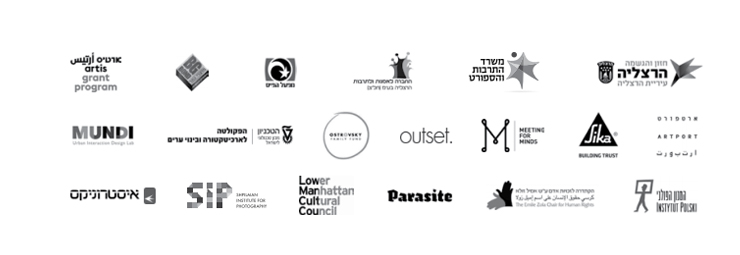The starting point of many of the projects on view was a mesmerizing encounter with a significant image, such as a photo of a woman in an old book, or an artist’s life story. These charged encounters have resulted in prolonged artistic journeys of exploration, which often included research in archives and libraries as well as interviews, following leads such as photographs, press clippings, or snippets of information. The need to open the “black box,” to decode, discover, and tell a forgotten story challenges the myth of Pandora, who opened the box despite the prohibition. The myth’s meaning is reversed here, for in light of these exhibitions Pandora is seen, in positive light, as a woman-researcher who, unflinching in her search for truth, seeks to shed light on dark corners. Another common thread between the projects is resistance to years of objectification or ideal representation of the feminine body through flat, dehumanized images. In the current exhibitions, the exposure of the body or its presence is, to a great extent, analogous to exposure of complex psychological, intellectual, and erotic aspects of femininity. Each of these artists’ journeys in the footsteps of women other than themselves has also brought them, as was to be expected, face to face – often paradoxically – with some kind of self-portrait.
Presented at the entrance to the museum are five works by Talia Sidi. Marking ten years to her death, they point to a journey cut short. Michal Heiman, whose show is on view in the large gallery, endeavors to envision the political, cultural, gendered, and psychic conditions of possibility of a “return.” She does so by revisiting women photographed in the 1850s while hospitalized in an insane asylum in London. To this end, she employs myriad strategies, including the creation of a community of women wearing the same asylum dress from 1855 to 2017, or holding individual encounters with visitors to the exhibition so they may provide her with consultation and support. Hilla Ben Ari’s complex project, curated by Tal Yahas, engages in dialogue with the dance language of Israeli choreographer Heda Oren (1935–2008) by placing the (mostly feminine) body in strenuous, almost impossible physical postures. The exhibition also includes an archival display about Oren, on view on the basement floor.
Ronit Porat, accompanied by the curator Orit Bulgaru, took a journey following the story of Miss Lieschen Neumann, a sixteen-year-old girl who was sentenced to jail in 1931 Berlin for the murder of Mr. Fritz Ulbrich, a watchmaker who lured young girls, including herself, into his backroom office, where he photographed them in erotic poses. The artist and poet Miriam Chalfi (ca. 1917–2002) is presented by the curator Galia Bar Or, who for many years has researched lesser known paths in the history of Israeli art. Chalfi’s works, unlike the iron sculpture of her male counterparts, are intimate and devoid of violence. Moran Shoub’s exhibition invites visitors to an encounter with the forgotten figure of the artist and illustrator Tzila Binder (1919–1987), who illustrated dozens of the volumes that make up the classic corpus of Hebrew children’s literature. Hinda Weiss undertook a desert journey of physical and conceptual movement, one in which both body and place became subject to a new organizing principle. In Tamar Latzman’s video the artist plays the role of Margaret Tadd, one of the women photographed by the pioneer 19th-century photographer Eadweard Muybridge, offering a possible feminine perspective on a seminal photographic event.
In addition, a new exhibition is held in the series “Inward Gaze,” which invites artists to explore the Herzliya Museum’s architectural and conceptual structure. Headed by David Behar-Perahia, the Mundi_Lab Group, whose other members are Noam Brokman, Ori Carmely, and Ronen Eidelman, will explore the physical and theoretical interconnections between the museum and its environment.

Less Reading...
